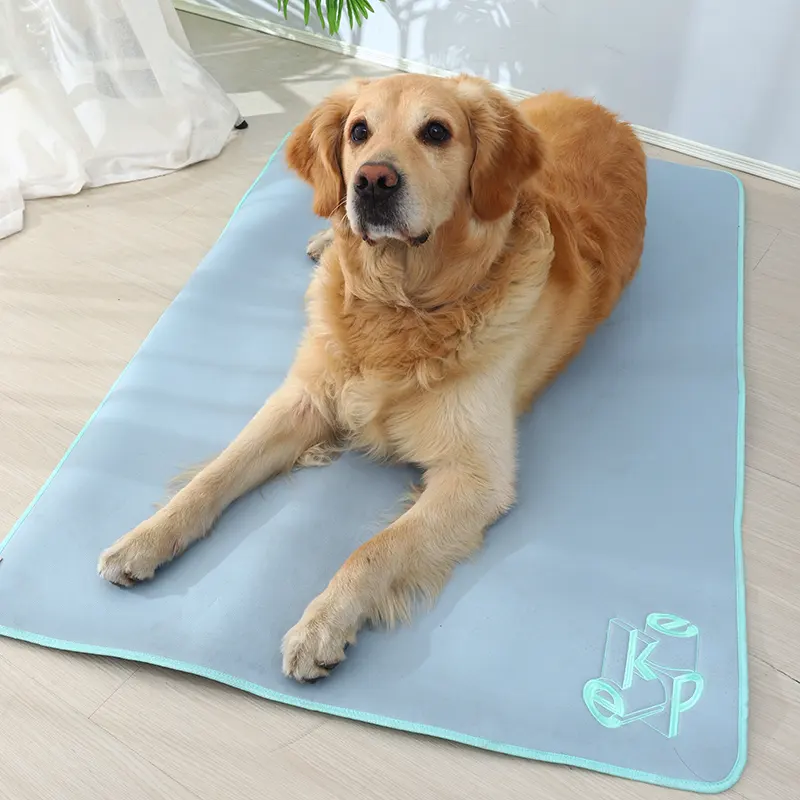House training a puppy can be both an exciting and challenging experience. One essential tool that can make this process easier is the puppy training pad. In this guide, we’ll delve into everything you need to know about puppy training pads, including practical tips, tricks, and some personal stories to help you along the way.
Thank you for reading this post, don't forget to subscribe!
Why Puppy Training Pads?
Training pads are a fantastic solution for new puppy parents. They provide a designated area for your puppy to relieve themselves.
Benefits of Puppy Training Pads
- Convenience: Easily place them anywhere in your home.
- Hygiene: Keep your floors clean and free from accidents.
- Training Aid: Help your puppy understand where it’s appropriate to go.
When we first brought home our little beagle, Max, we were overwhelmed with the number of accidents on our hardwood floors. Puppy training pads were a game-changer. Not only did they save our floors, but they also helped Max learn where to go much quicker.
Choosing the Right Puppy Training Pad
There are numerous types of puppy training pads on the market, and choosing the right one can be a bit daunting.
Factors to Consider
- Absorbency: Look for pads with high absorbency to avoid leaks.
- Size: Ensure the pad is large enough for your puppy.
- Odor Control: Some pads come with odor neutralizers, which can be a lifesaver.
- Eco-Friendly Options: If you’re environmentally conscious, opt for biodegradable or washable pads.
I remember our first trip to the pet store, overwhelmed by the options. We started with basic pads, but quickly upgraded to ones with odor control after realizing how much of a difference they made in keeping our home fresh.
How to Use Puppy Training Pads Effectively
Using puppy training pads effectively involves a combination of placement, timing, and positive reinforcement.
Placement
- Consistency is Key: Place the pads in the same spot to help your puppy associate that area with relieving themselves.
- Easily Accessible: Ensure the pad is in a spot that’s easy for your puppy to reach, but not in high traffic areas of your home.
Timing
- Regular Intervals: Take your puppy to the pad regularly, especially after meals, naps, and playtime.
- Watch for Signs: Learn to recognize when your puppy needs to go, such as sniffing around or circling.
Positive Reinforcement
- Treats and Praise: Reward your puppy with treats and praise whenever they use the pad correctly.
- Consistency: Be consistent with your rewards to reinforce the behavior.
With Max, we found that using treats and lots of enthusiastic praise made him more eager to use the pads. It created a positive association, and he quickly learned what we wanted him to do.
Transitioning from Pads to Outside
Eventually, you’ll want to transition your puppy from using training pads to going outside.
Gradual Transition
- Move the Pad: Gradually move the pad closer to the door until it’s outside.
- Decrease Pad Use: Start reducing the number of pads in your home as your puppy gets used to going outside.
Maintain Routine
- Consistent Schedule: Keep a consistent schedule for taking your puppy outside.
- Praise and Reward: Continue to use praise and rewards when your puppy goes outside.
For Max, the transition took about a month. We started by moving the pads closer to the back door and eventually outside. Each successful outdoor trip was met with his favorite treats and lots of belly rubs.

Common Challenges and Solutions
House training isn’t without its challenges. Here are some common issues and how to address them.
Accidents
- Stay Calm: Don’t scold your puppy for accidents. Clean it up thoroughly to remove any scent.
- Review Routine: Revisit your training routine and make adjustments as needed.
Pad Chewing
- Provide Chew Toys: Ensure your puppy has plenty of appropriate toys to chew on.
- Secure the Pad: Use pad holders or tape the corners to keep the pad in place.
Max had a phase where he thought the training pads were a chew toy. We quickly learned to secure the pads and provided him with plenty of other toys to chew on, which redirected his attention.

Advanced Tips for House Training
Once the basics are down, you might want to explore some advanced tips to refine your puppy’s house training.
Bell Training
- Hang a Bell: Hang a bell by the door and teach your puppy to ring it when they need to go out.
- Consistent Reinforcement: Reinforce the behavior with praise and rewards.
Crate Training
- Crate as a Safe Space: Use the crate as a safe space, not a punishment.
- Regular Breaks: Take your puppy out regularly, especially after naps and meals.
We introduced bell training with Max, and it was incredible to see him ring the bell when he needed to go out. It added an extra layer of communication between us and made the house training process even smoother.
Conclusion
House training your puppy with training pads can be a smooth and stress-free process with the right tools and techniques. Remember to be patient, consistent, and positive throughout the journey. With these tips and a bit of persistence, you’ll have a well-trained puppy in no time.
Whether you’re a first-time puppy parent or adding a new member to your furry family, puppy training pads can be an invaluable aid in ensuring a clean home and a happy, well-trained pup. Good luck, and enjoy every moment with your new furry friend!
